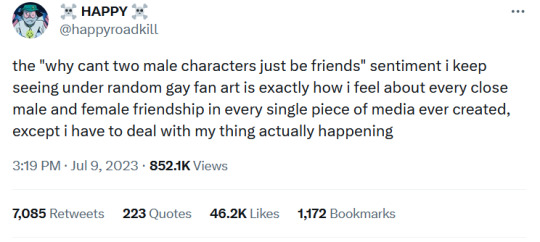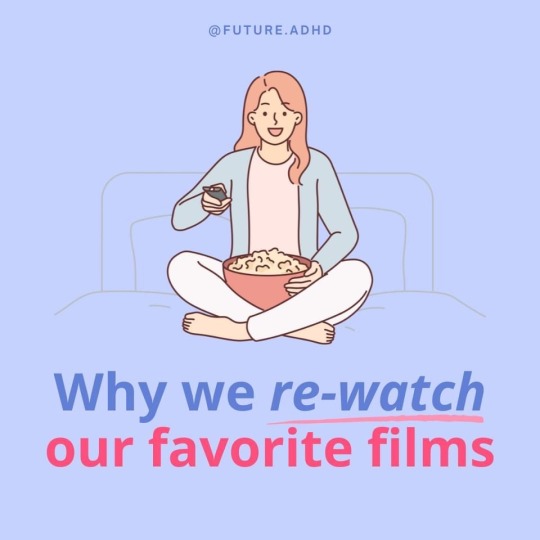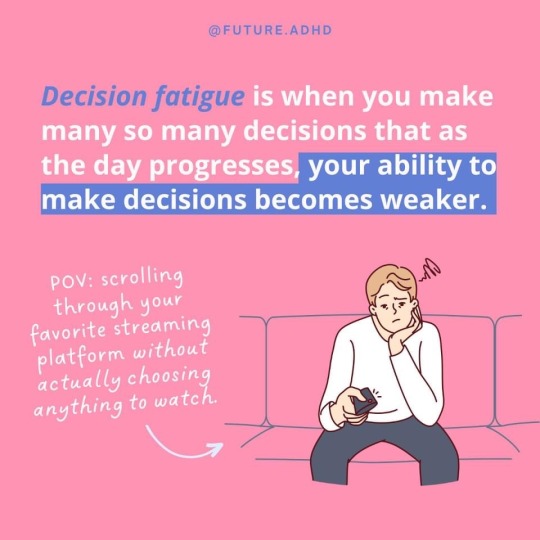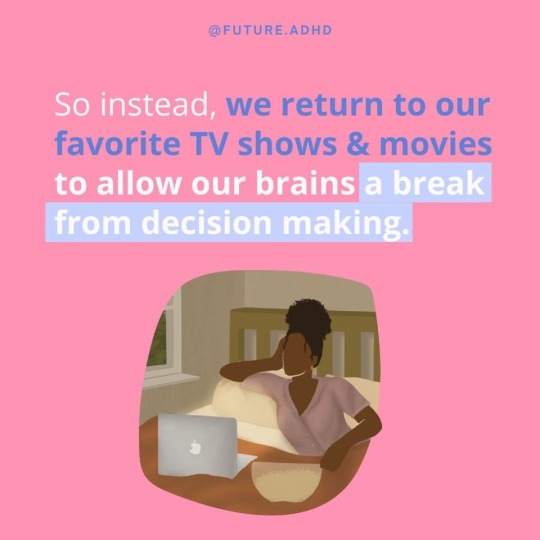#post-facebook
Text
Social Quitting

In “Social Quitting,” my latest Locus Magazine column, I advance a theory to explain the precipitous vibe shift in how many of us view the once-dominant social media platforms, Facebook and Twitter, and how it is that we have so quickly gone asking what we can do to get these services out of our lives to where we should go now that we’re all ready to leave them:
https://locusmag.com/2023/01/commentary-cory-doctorow-social-quitting/
The core of the argument revolves around surpluses — that is, the value that exists in the service. For a user, surpluses are things like “being able to converse with your friends” and “being able to plan activities with your friends.” For advertisers, surpluses are things like “being able to target ads based on the extraction and processing of private user data” and “being able to force users to look at ads before they can talk to one another.”
For the platforms, surpluses are things like, “Being able to force advertisers and business customers to monetize their offerings through the platform, blocking rivals like Onlyfans, Patreon, Netflix, Amazon, etc” and things like “Being able to charge more for ads” and “being able to clone your business customers’ products and then switch your users to the in-house version.”
Platforms control most of the surplus-allocating options. They can tune your feed so that it mostly consists of media and text from people you explicitly chose to follow, or so that it consists of ads, sponsored posts, or posts they think will “boost engagement” by sinking you into a dismal clickhole. They can made ads skippable or unskippable. They can block posts with links to rival sites to force their business customers to transact within their platform, so they can skim fat commissions every time money changes hands and so that they can glean market intelligence about which of their business customers’ products they should clone and displace.
But platforms can’t just allocate surpluses will-ye or nill-ye. No one would join a brand-new platform whose sales-pitch was, “No matter who you follow, we’ll show you other stuff; there will be lots of ads that you can’t skip; we will spy on you a lot.” Likewise, no one would sign up to advertise or sell services on a platform whose pitch was “Our ads are really expensive. Any business you transact has to go through us, and we’ll take all your profits in junk fees. This also lets us clone you and put you out of business.”
Instead, platforms have to carefully shift their surpluses around: first they have to lure in users, who will attract business customers, who will generate the fat cash surpluses that can be creamed off for the platforms’ investors. All of this has to be orchestrated to lock in each group, so that they won’t go elsewhere when the service is enshittified as it processes through its life-cycle.
This is where network effects and switching costs come into play. A service has “network effects” if it gets more valuable as users join it. You joined Twitter to talk to the people who were already using it, and then other people joined so they could talk to you.
“Switching costs” are what you have to give up when you leave a service: if a service is siloed — if it blocks interoperability with rivals — then quitting that service means giving up access to the people whom you left behind. This is the single most important difference between ActivityPub-based Fediverse services like Mastodon and the silos like Twitter and Facebook — you can quit a Fediverse server and set up somewhere else, and still maintain your follows and followers:
https://pluralistic.net/2022/12/23/semipermeable-membranes/#free-as-in-puppies
In the absence of interoperability, network effects impose their own switching cost: the “collective action problem” of deciding when to leave and where to go. If you depend on the people you follow and who follow you — for emotional support, for your livelihood, for community — then the extreme difficulty of convincing everyone to leave at the same time and go somewhere else means that you can be enticed into staying on a service that you no longer enjoy. The platforms can shift the surpluses away from you, provided that doing so makes you less miserable than abandoning your friends or fans or customers would. This is the Fiddler On the Roof problem: everyone stays put in the shtetl even though the cossacks ride through on the reg and beat the shit out of them, because they can’t all agree on where to go if they leave:
https://doctorow.medium.com/how-to-leave-dying-social-media-platforms-9fc550fe5abf
So the first stage of the platform lifecycle is luring in users by allocating lots of surplus to them — making the service fun and great and satisfying to use. Few or no ads, little or no overt data-collection, feeds that emphasize the people you want to hear from, not the people willing to pay to reach you.
This continues until the service attains a critical mass: once it becomes impossible to, say, enroll your kid in a little-league baseball team without having a Facebook account, then Facebook can start shifting its surpluses to advertisers and other business-users of the platform, who will pay Facebook to interpose themselves in your use of the platform. You’ll hate it, but you won’t leave. Junior loves little-league.
Facebook can enshittify its user experience because the users are now locked in, holding each other hostage. If Facebook can use the courts and technological countermeasures to block interoperable services, it can increase its users’ switching costs, producing more opportunities for lucrative enshittification without the risk of losing the users that make Facebook valuable to advertisers. That’s why Facebook pioneered so many legal tactics for criminalizing interoperability:
https://www.eff.org/cases/facebook-v-power-ventures
This is the second phase of the toxic platform life-cycle: luring in business customers by shifting surpluses from users to advertisers, sellers, etc. This is the moment when the platforms offer cheap and easy monetization, low transaction fees, few barriers to off-platform monetization, etc. This is when, for example, a news organization can tease an article on its website with an off-platform link, luring users to click through and see the ads it controls.
Because Facebook has locked in its users through mutual hostage-taking, it can pollute their feeds with lots of these posts to news organizations’ sites, bumping down the messages from its users’ friends, and that means that Facebook can selectively tune how much traffic it gives to different kinds of business customers. If Facebook wants to lure in sports sites, it can cram those sites’ posts into millions of users’ feeds and send floods of traffic to sports outlets.
Outlets that don’t participate in Facebook lose out, and so they join Facebook, start shoveling their content into it, hiring SEO Kremlinologists to help them figure out how to please The Algorithm, in hopes of gaining a permanent, durable source of readers (and thus revenue) for their site.
But ironically, once a critical mass of sports sites are on Facebook, Facebook no longer needs to prioritize sports sites in its users’ feeds. Now that the sports sites all believe that a Facebook presence is a competitive necessity, they will hold each other hostage there, egging each other on to put more things on Facebook, even as the traffic dwindles.
Once sports sites have taken each other hostage, Facebook can claw back the surplus it allocated to them and use it to rope in another sector — health sites, casual games, employment seekers, financial advisors, etc etc. Each group is ensnared by a similar dynamic to the one that locks in the users.
But there is a difference between users’ surpluses and business’s surpluses. A user’s surplus is attention, and there is no such thing as an “attention economy.” You can’t use attention to pay for data-centers, or executive bonuses, or to lobby Congress. Attention is not a currency in the same way that cryptos are not currency — it is not a store of value, nor a unit of exchange, nor or a unit of account.
Turning attention into money requires the same tactics as turning crypto into money — you have to lure in people who have real, actual money and convince them to swap it for attention. With crypto, this involved paying Larry David, Matt Damon, Spike Lee and LeBron James to lie about crypto’s future in order to rope in suckers who would swap their perfectly cromulent “fiat” money for unspendable crypto tokens.
With platforms, you need to bring in business customers who get paid in actual cash and convince them to give you that cash in exchange for ethereal, fast-evaporating, inconstant, unmeasurable “attention.” This works like any Ponzi scheme (that is, it works like cryptos): you can use your shareholders’ cash to pay short-term returns to business customers, losing a little money as a convincer that brings in more trade.
That’s what Facebook did when it sent enormous amounts of traffic to a select few news-sites that fell for the pivot to video fraud, in order to convince their competitors to borrow billions of dollars to finance Facebook’s bid to compete with Youtube:
https://doctorow.medium.com/metaverse-means-pivot-to-video-adbe09319038
This convincer strategy is found in every con. If you go to the county fair, you’ll see some poor bastard walking around all day with a giant teddy bear that he “won” by throwing three balls into a peach-basket. The carny who operated that midway game let him win the teddy precisely so that he would walk around all day, advertising the game, which is rigged so that no one else wins the giant teddy-bear:
https://boingboing.net/2006/08/27/rigged-carny-game.html
Social media platforms can allocate giant teddy-bears to business-customers, and it can also withdraw them at will. Careful allocations mean that the platform can rope in a critical mass of business customers and then begin the final phase of its life-cycle: allocating surpluses to its shareholders.
We know what this looks like.
Rigged ad-markets:
https://en.wikipedia.org/wiki/Jedi_Blue
Understaffed content moderation departments:
https://www.dw.com/en/twitters-sacking-of-content-moderators-will-backfire-experts-warn/a-63778330
Knock-off products:
https://techcrunch.com/2021/12/08/twitter-is-the-latest-platform-to-test-a-tiktok-copycat-feature/
Nuking “trust and safety”:
https://www.reuters.com/technology/twitter-dissolves-trust-safety-council-2022-12-13/
Hiding posts that have links to rival services:
https://www.makeuseof.com/content-types-facebook-hides-why/
Or blocking posts that link to rival services:
https://pluralistic.net/2022/12/19/better-failure/#let-my-tweeters-go
Or worse, terminating accounts for linking to rival services:
https://blog.joinmastodon.org/2022/12/twitter-suspends-mastodon-account-prevents-sharing-links/
That is, once a platform has its users locked in, and has its business customers locked in, it can enshittify its service to the point of near uselessness without losing either, allocating all the useful surplus in the business to its shareholders.
But this strategy has a problem: users and business customers don’t like to be locked in! They will constantly try to find ways to de-enshittify your service and/or leave for greener pastures. And being at war with your users and business customers means that your reputation continuously declines, because every time a user or business customer figures out a way to claw back some surplus, you have to visibly, obviously enshittify your service wrestle it back.
Every time a service makes headlines for blocking an ad-blocker, or increasing its transaction fees, or screwing over its users or business customers in some other way, it makes the case that the price you pay for using the service is not worth the value it delivers.
In other words, the platforms try to establish an equilibrium where they only leave business customers and users with the absolute bare minimum needed to keep them on the service, and extract the rest for their shareholders. But this is a very brittle equilibrium, because the prices that platforms impose on their users and business customers can change very quickly, even if the platforms don’t do anything differently.
Users and business customers can revalue the privacy costs, or the risks of staying on the platform based on exogenous factors. Privacy scandals and other ruptures can make the cost you’ve been paying for years seem higher than you realized and no longer worth it.
This problem isn’t unique to social media platforms, either. It’s endemic to end-stage capitalism, where companies can go on for years paying their workers just barely enough to survive (or even less, expecting them to get public assistance and/or a side-hustle), and those workers can tolerate it, and tolerate it, and tolerate it — until one day, they stop.
The Great Resignation, Quiet Quitting, the mass desertions from the gig economy — they all prove the Stein’s Law: “Anything that can’t go on forever will eventually stop.”
Same for long, brittle supply-chains, where all the surplus has been squeezed out: concentrating all the microchip production in China and Taiwan, all the medical saline in Puerto Rico, all the shipping into three cartels… This strategy works well, and can be perfectly tuned with mathematical models that cut right to the joint, and they work and they work.
Until they stop. Until covid. Or war. Or wildfires. Or floods. Or interest rate hikes. Or revolution. All this stuff works great until you wake up and discover that the delicate balance between paying for guard labor and paying for a fair society has tilted, and now there’s a mob building a guillotine outside the gates of your luxury compound.
This is the force underpinning collapse: “slow at first, then all at once.” A steady erosion of the failsafes, flensing all the slack out of the system, extracting all the surpluses until there’s nothing left in the reservoir, no reason to stay.
It’s what caused the near-collapse of Barnes and Noble, and while there are plenty of ways to describe James Daunt’s successful turnaround, the most general characterization is, “He has reallocated the company’s surpluses to workers, readers, writers and publishers”:
https://tedgioia.substack.com/p/what-can-we-learn-from-barnes-and
A system can never truly stabilize. This is why utopias are nonsense: even if you design the most perfect society in which everything works brilliantly, it will still have to cope with war and meteors and pandemics and other factors beyond your control. A system can’t just work well, it has to fail well.
This is why I object so strenuously to people who characterize my 2017 novel Walkaway as a “dystopian novel.” Yes, the protagonists are eking out survival amidst a climate emergency and a failing state, but they aren’t giving up, they’re building something new:
https://locusmag.com/2017/06/bruce-sterling-reviews-cory-doctorow/
“Dystopia” isn’t when things go wrong. Assuming nothing will go wrong doesn’t make you an optimist, it makes you an asshole. A dangerous asshole. Assuming nothing will go wrong is why they didn’t put enough lifeboats on the Titanic. Dystopia isn’t where things go wrong. Dystopia is when things go wrong, and nothing can be done about it.
Anything that can’t go on forever will eventually stop. The social media barons who reeled users and business customers into a mutual hostage-taking were confident that their self-licking ice-cream cone — in which we all continued to energetically produce surpluses for them to harvest, because we couldn’t afford to leave — would last forever.
They were wrong. The important thing about the Fediverse isn’t that it’s noncommercial or decentralized — it’s that its design impedes surplus harvesting. The Fediverse is designed to keep switching costs as low as possible, by enshrining the Right Of Exit into the technical architecture of the system. The ability to leave a service without paying a price is the best defense we have against the scourge of enshittification.
(Thanks to Tim Harford for inspiring this column via an offhand remark in his kitchen a couple months ago!)
[Image ID: The Phillip Medhurst Picture Torah 397. The Israelites collect manna. Exodus cap 16 v 14. Luyken and son.]
#pluralistic#social media#post-twitter#post-facebook#switching costs#network effects#web theory#locus magazine#exodus#decentralization
3K notes
·
View notes
Text
How Network Switches Work
How Network Switches Work: Unveiling the Magic Behind Seamless Data Routing
Introduction
In today's interconnected world, where the exchange of information is vital, network switches play a pivotal role in ensuring data flows seamlessly from one device to another. Whether in a small home network or a sprawling corporate infrastructure, network switches are the unsung heroes that enable efficient data transmission. This article delves into the inner workings of network switches, shedding light on their fundamental principles and the magic that makes them an integral part of modern networking.
What Is a Network Switch?
A network switch is a piece of networking hardware that connects devices within a local area network (LAN). Its primary function is to receive incoming data frames from devices like computers, printers, or servers and then forward those data frames to their intended destination within the same network. Unlike hubs, which broadcast data to all devices within a network, switches are intelligent devices that make data transmission more efficient by selectively sending data only to the device that needs it.
How Do Network Switches Work?
Network switches operate on the Data Link Layer (Layer 2) of the OSI model. To understand how they work, let's break down the process step by step:
1. MAC Address Learning:
ü When a network switch is initially powered on, it doesn't know the location of devices on the network.
ü It begins by examining the source MAC (Media Access Control) addresses of incoming data frames.
ü The switch maintains a MAC address table, also known as a MAC address forwarding table or CAM table, where it records the MAC addresses of devices connected to its ports.
2. MAC Address Table:
§ As data frames arrive, the switch adds entries to its MAC address table.
§ Each entry in the table associates a MAC address with the port through which the device is connected.
§ This table allows the switch to quickly determine where to forward data frames in the future.
3. Frame Forwarding:
· When a data frame arrives at the switch, it examines the destination MAC address.
· The switch looks up the destination MAC address in its MAC address table to find the corresponding port.
· If the port is the same as the incoming port, the switch doesn't forward the frame, preventing unnecessary traffic.
· If the destination is on a different port, the switch forwards the frame only to that specific port, ensuring efficient data transmission.
4. Broadcast and Unknown MAC Addresses:
Ø If the switch receives a broadcast frame (destined for all devices within the network), it forwards it to all ports except the source port.
Ø If the destination MAC address is not found in the MAC address table, the switch behaves like a hub and broadcasts the frame to all ports, learning the source MAC address in the process.
Benefits of Network Switches:
Improved Efficiency: Network switches enhance network performance by minimizing unnecessary traffic, reducing congestion, and increasing bandwidth availability.
Enhanced Security: Since switches only send data to the intended recipient, they provide a higher level of network security compared to hubs.
Scalability: Switches can accommodate a growing number of devices and are a scalable solution for expanding networks.
Smart Management: Many network switches offer advanced management features, allowing administrators to monitor and control network traffic more effectively.
Expanding on the importance and versatility of network switches:
Evolution and Varieties of Network Switches
Over the years, network switches have evolved to meet the demands of various network environments. Today, there are several types of network switches catering to diverse needs:
Unmanaged Switches: These are basic switches designed for plug-and-play simplicity. They are ideal for small home networks and require no configuration. Unmanaged switches automatically learn and forward data frames.
Managed Switches: Managed switches offer greater control and flexibility. Network administrators can configure them to optimize performance, set up VLANs (Virtual Local Area Networks), prioritize traffic, and monitor network activity. These switches are common in business and enterprise networks.
Layer 2 and Layer 3 Switches: Layer 2 switches operate at the Data Link Layer (MAC address), while Layer 3 switches can route traffic at the Network Layer (IP address). Layer 3 switches are like a hybrid between a switch and a router, making them suitable for more complex networks.
PoE (Power over Ethernet) Switches: These switches not only transmit data but also provide power to connected devices like IP cameras, VoIP phones, and wireless access points, eliminating the need for separate power sources.
Stackable Switches: These switches can be stacked together to operate as a single unit, simplifying management and scalability in larger networks.
#pluralistic#social media#post-twitter#post-facebook#switching costs#network effects#web theory#locus magazine#exodus#decentralization#artists on tumblr#alternative#technology#climate action#climate and environment#flowers#nature#climate change#succession#climate news
0 notes
Text

37K notes
·
View notes
Text

glow up of the century 😍😍😍😍😍😍😍😍😍😍😁😁😁😁😁😁😁
#ithink he posts stuff like this on#facebook or whatever#my art#the spot#spiderverse#atsv#spiderman across the spiderverse#across the spiderverse#into the spiderverse#jonathan ohnn#the spot fanart#spiderman
11K notes
·
View notes
Text

#tweets#extremely relevant to my fandom#'WAH WAAAH WHY CANT BIRDRICK BE PLATONIC WAHH WAAHHH NOT EVERYTHING HAS TO BE GAY'#lmao 99% of protagonists end up in a straight relationship even if the characters have no chemistry#we can't have ONE same-gender relationship?#this happens in other fandoms too#I saw a wednesday/enid ship post on facebook and the comments were an endless spew of 'wah wah why can't they be FRIENDS'#who the fuck said they can't??#you just don't like it because it's a WLW ship
11K notes
·
View notes
Text
It always surprises me how many deactivated users there are here. And maybe most of them are the natural consequence of URL-hopping, but beyond those, the ones that intentionally deactivated--just the idea of actively deciding to terminate an account is so foreign to me.
I'm in the business of atrophy.
My Neopets exist, and persist, and are dying and continue to die for the last ten years my account has been dark. My penguin lived until the day Club Penguin died, immobile in its igloo, decoration among the puffles. My Webkinz stand in rooms which time refuses to allow even the dignity of gathering dust. My footprint stuffs the digital shelves of datacenters for sites and accounts I do not remember making.
I've made a horde of scattered exoskeletons, shells which I cannot even call ghosts because that implies a presence. They are husks. They are archives. They are records. I do not ever consider the mercy of allowing them to die.
#EXCEPT FACEBOOK. FUCK FACEBOOK. THIS POST IS NOT ABOUT FACEBOOK#DO DELETE YOUR FACEBOOK#chrissy speaks
43K notes
·
View notes
Text
Re-watching Shows/Movies







Future ADHD
#adhd#adhd post#re-watching shows/movies#neurodiversity#I’m sure autism individuals can relate to this too#feel free to reblog/share#Future ADHD (Facebook)#tw bright colors#tw eye strain
5K notes
·
View notes
Text

3K notes
·
View notes
Text
Clark is taking Kon and Jon out for a classic, super-style bonding flight. Just a quick jaunt around the US and back!
They don’t get far. Somewhere in Illinois airpace, they run across another family.
The three (a hulking man, a snarky teenage boy, and a cackling youngest girl, each a grayscale blur in the blue, blue sky) throw neon-lit beams of energy at one another, quips and insults flying almost as fast as they do. It looks like training. It looks like fun!
The boy of them looks like a younger version of the man. Exactly like, even. Clark is familiar with clones.
The youngest, a girl, looks like both of them, but not quite. Perhaps she will, age sharpening her childish features, but it’s hard to say. More likely, she’s the man’s daughter.
Interested, Clark introduces himself to Dan. He seems to be a hero in his own right, even if Superman’s yet to see him in action. And it’s not often Clark sees a family so like his own!
#post agit but with the hc that dans ghost form stays the same! big and scary!#clark: oh! you’re a clone? here meet kon he’s also a clone!#clark: [pushes kon toward danny] teen boy clones! you should exchange instasnaps or smth. or facebooks! kids still use that to chat right?#danielle: is this identity theft. and if so. can i steal dans ID i wanna be the evil version from an alternate timeline now#dp x dc#dpxdc#prompt#dpxdc prompt#kipwrite#less of a ficlet more of an interesting observation and funny potential misunderstanding. which actually still counts now that i think of it#whatever sorry ive been busy!!#danny fenton#dark danny#danielle fenton#clark kent#kon el#jon kent#realizing now i hardly ever spell his name connor. hm
1K notes
·
View notes
Text



#this is arguably the worst one i’ve posted and i’m very proud of myself#lmFAO#mdzs#the untamed#mo dao zu shi#mdzs donghua#wei wuxian#wei ying#lan wangji#lan zhan#hanguang jun#yiling laozu#yiling patriarch#chengqing#mdzs meme#mdzs crack#mdzs shitpost#gif#source: facebook#made the gifs myself bc i couldn’t find this specific scene in the search so#gif by me#apple memes 🍎#wangxian
2K notes
·
View notes
Text

support group for 🐑🦐 pls 💢💢
☆ as always do not repost without permission & remove my watermark! always rb and save instead! tysm! <3 check out my other handles if u like!
#/my art#twitter crosspost#Facebook cross post#i got inspired by the memes of both mcs so#they look like theyre angry at each other but i swear theyre bonding#tumblr decreas e my art quality again#they also desperately need money-#Stan them instead /hj#twisted wonderland#obey me#obey me shall we date#obey me nightbringer#twisted wonderland memes#disney twisted wonderland#om mammon#obey me mammon#fanartist#artists on tumblr#digital artist#obey me fanart#twst fanart#twst shrimpy#obey me sheep mc#obey me mc#twst mc#omswd#obey me nb#twst meme#disney twst#twst wonderland
7K notes
·
View notes
Text
Wednesday: I've never had a best friend before.
Enid: I'll be your best friend!
Wednesday:
Wednesday: I've never had a girlfriend before.
#hehe#silly goofy post#but i saw something on facebook#thought itd work#tryna make up for the lack of posts this past week#wednesday addams#enid sinclair#wednesday#incorrect wednesday quotes#enid#wenclair
543 notes
·
View notes
Text
STOP MAKING APPS WE ALREADY PEAKED WITH NEKO ATSUME‼️‼️‼️
2K notes
·
View notes
Text
yes threads is bad because facebook/meta is bad but as somebody who has worked in social media for years and kept up with every bad thing all these companies does knows, facebook/meta is bad on levels you cannot even fathom bc they have your ass even if you don't have an account. they're collecting data through facebook pixels on websites on you even if you don't have an account. they admitted it openly back in 2018. i mean so does google and a lot else, but - threads is fucking stupid and it will probably be a test to eventually have all its features rolled into IG and IG will just become Second Facebook, bc i DOUBT zuck will want to run a FOURTH separate social community and platform (bc meta also owns whatsapp), but just keep in mind it is....no better or worse than anything else. same with tiktok. they're all getting their ASS beat by the EU and GDPR regulations bc they're all still doing it and paying millions to fight in court.
2K notes
·
View notes

